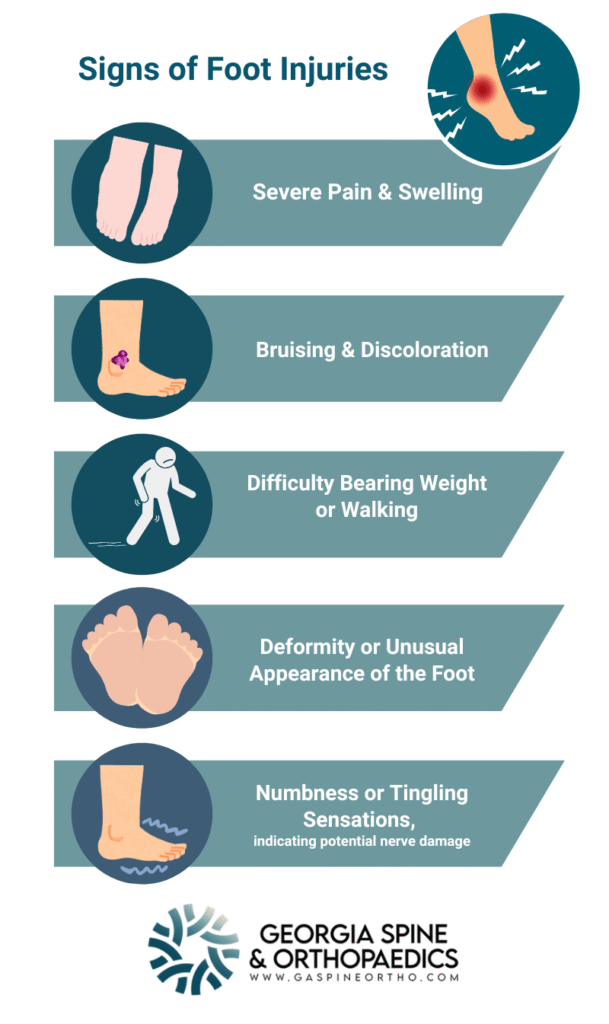
Being struck by a car, even at low speeds, can have devastating consequences. One of the most common and painful scenarios is what happens if a car runs over your foot. This incident can lead to severe injuries that impact mobility, daily life, and overall well-being. Understanding the potential dangers and implementing preventive measures are crucial for protecting yourself from such accidents.
This article delves into the complexities of foot injuries caused by cars, exploring the range of possible consequences, highlighting the severity levels, and providing practical tips for both drivers and pedestrians to minimize the risk of these incidents.
Car Accident Injuries
A car accident involving a pedestrian’s foot can result in a wide spectrum of injuries, ranging from minor bruises to life-altering trauma. The force of impact, the speed of the vehicle, and the point of contact all contribute to the severity of the damage. Some common injuries sustained in these accidents include:
- Fractures: Broken bones in the foot, ankle, or even the leg can occur due to the immense pressure exerted by the car’s weight. These fractures often require surgery, immobilization, and extensive rehabilitation.
- Crush Injuries: The impact of a car can crush soft tissues, muscles, tendons, and ligaments within the foot. This can lead to severe pain, swelling, and permanent damage to the affected structures.
- Nerve Damage: Nerves in the foot are highly susceptible to injury during a car accident. Damaged nerves can result in numbness, tingling, weakness, or even paralysis in the foot and lower leg.
Foot Injury Severity
The severity of a foot injury sustained in a car accident is classified based on the extent of damage and potential long-term consequences.
- Mild Injuries: These involve minor bruises, sprains, or strains that typically heal within a few weeks with rest, ice, compression, and elevation (RICE).
- Moderate Injuries: Moderate injuries include fractures, dislocations, or significant soft tissue damage requiring medical attention, immobilization, and potentially physical therapy.
- Severe Injuries: Severe injuries encompass complex fractures, crush injuries, nerve damage, or amputation. These cases often necessitate extensive surgery, prolonged rehabilitation, and may result in permanent disability.
Long-Term Effects
Even seemingly minor foot injuries can have lasting effects if not properly treated. Chronic pain, limited mobility, difficulty walking, and altered gait are common long-term consequences of car accidents involving the foot.
Preventing Run Over Accidents
Preventing run over accidents requires a multi-faceted approach involving both drivers and pedestrians.
- Driver Awareness: Drivers must remain vigilant and attentive to their surroundings, especially in areas with pedestrian traffic. This includes scanning crosswalks, looking for children playing, and maintaining a safe following distance.
- Pedestrian Responsibility: Pedestrians should always cross the street at designated crosswalks, make eye contact with drivers before crossing, and avoid distractions like cell phones while walking.
Safe Driving Practices
Safe driving practices are paramount in preventing run over accidents.
- Slow Down: Reduce speed in residential areas, school zones, and near pedestrian crossings to allow for quicker reaction time and minimize the impact of a collision.
- Yield to Pedestrians: Always yield to pedestrians at crosswalks and intersections. Remember that they have the right of way.
- Avoid Distractions: Put away cell phones, adjust the radio before driving, and avoid engaging in conversations that divert your attention from the road.
Pedestrian Safety Tips
Pedestrians can take several steps to enhance their safety when navigating roads.
- Be Visible: Wear bright clothing, especially at night, and use reflective gear to increase visibility to drivers.
- Stay Alert: Pay attention to traffic signals, signs, and approaching vehicles. Avoid walking while distracted by headphones or cell phones.
- Cross Safely: Always cross the street at designated crosswalks and make eye contact with drivers before stepping into the road.
Conclusion
Car accidents involving pedestrians can have devastating consequences, particularly when a foot is struck. Understanding the potential for severe injuries, practicing safe driving habits, and adhering to pedestrian safety guidelines are crucial for minimizing the risk of these incidents. By working together, drivers and pedestrians can create safer roads for everyone.
